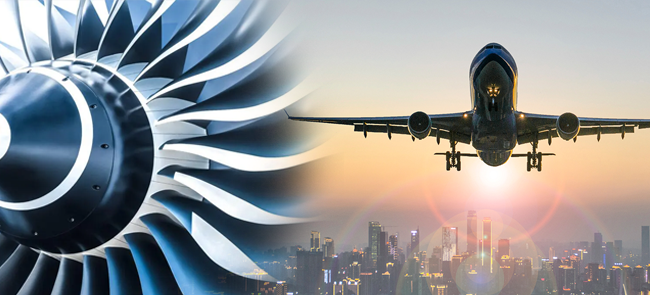
Aerospace castings require precise measurements and product manufacturing. Quality components for the industry are of the greatest significance. Aerospace castings are used in the industry to create tiny and big aircraft components. Aluminium is the most frequently cast non-ferrous metal in the world for a variety of reasons. The most common rationale for using aluminium die-casting is because it produces delicate die-cast parts without compromising strength.
Aluminum alloys are perfect in aerospace applications because they are lightweight and strong. Cast aluminum is approximately one-third the weight of steel, allowing an aircraft to transport more weight at higher fuel efficiencies. Additionally, aluminum's high resistance to corrosion ensures the safety of the aircraft and its passengers.
The frames of typical modern aircraft consist primarily of aluminum. Aluminum alloys are the preferred choice for the wing, fuselage and other supporting structures of both commercial and military aircraft.
Aluminum has been the material of choice for various space structures Because it can withstand stress during launch and operation. Aluminum properties consistently exceed other metals in mechanical stability, reduced weight and thermal management.
- Engine Housings: Aluminium castings are used in turbofan engines and other aircraft power plants for their ability to withstand high temperatures and stresses
- Compressor Housings: Aluminum castings used to house the compressor section of jet engines, providing structural integrity and reducing weight
- Turbine Housings: These castings protect the turbine section and are designed to withstand high temperatures and pressures
- Landing Gear Components: Lightweight yet strong, these parts help reduce overall aircraft weight
- Main Landing Gear Struts: Lightweight yet strong aluminum castings that support the aircraft during landing and taxiing
- Nose Gear Components: Aluminum cast parts used in the nose landing gear assembly, providing durability and reducing overall aircraft weight
- Avionics Housings: Protect sensitive electronic systems while minimizing weight
- Flight Control Computer Housings: Precision-cast aluminum enclosures that protect sensitive avionics equipment from environmental factors
- Navigation System Housings: Lightweight aluminum castings used to encase navigation systems, ensuring reliability and performance
- Fuselage Frames: Provide structural support to the aircraft body
- Bulkheads: Structural aluminum castings used to divide the fuselage into sections, providing strength and rigidity
- Stringers: Longitudinal aluminum cast components that reinforce the fuselage skin and maintain its shape
- Structural Components: These castings are used in the structural framework of aircraft, including fuselage and wing components. Aluminum wheels, Steering knuckles, Brake calipers etc.
- Spacecraft Components: They are also used in various components of spacecraft, including those for space shuttles, Cross members etc.
- Turbine Blades: Essential for jet engines, these blades often feature intricate internal cooling channels
- High-Pressure Turbine Blades: These blades are critical for jet engines, featuring intricate internal cooling channels to manage heat transfer efficiently
- Low-Pressure Turbine Blades: Used in the latter stages of the engine, these blades are designed to extract energy from the lower pressure exhaust gases
- Great Resistance to Corrosion: Aluminium die-cast components ensures longevity and reliability of components in harsh environments. Aluminum is especially valuable for aircraft operating in environments susceptible to corrosion. Die-cast parts can also resist harsh weather conditions and resist increasing damage.
- Lightweight and durable: Die-casting aluminium products are highly appreciated particularly in the aerospace industry, where product precision and quality are critical. These items are used in the aerospace sector to build both tiny and large components. Aluminium castings reduces the overall weight of the aircraft, improving fuel efficiency and performance.
- Cost-Effective: Another significant argument for utilizing aluminium in aircraft is because metals are less expensive than other liquid metals. When compared to other industrial sectors, die-casted metal is considerably cheaper and more economical for the industry
- Flexible: Aluminium has the potential to combine with other metals to offer durability and flexibility. As a result, they are approved for safe usage on aircraft and possess all of the characteristics needed to fly an airplane
- High strength-to-weight ratios: Aluminium casting provides the necessary strength without adding excessive weight. It's structural integrity allows it to replace other heavier metals without sacrificing strength. This helps in airplane operation.
- Outstanding chemical stability: Cast aluminum is one of the most difficult metals to alter chemically.
- Superior thermal and electrical conductivity: Helps in managing the thermal loads in engine and structural components. Aluminium castings hold up in high temperatures compared to most metals. Aluminum conserves vast amounts of energy with its outstanding conductivity rates.
- Smooth surface finish: Aluminium die-cast parts also offer additional surface finishing choices and operate at greater temperatures than other non-ferrous materials. This feature aids in resistance and allows for easy modification of manufactured components.